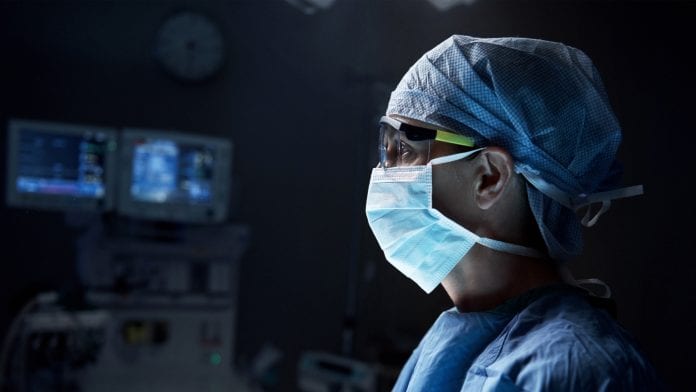
Researchers from Murayama Medical Center, Tokyo, have developed a device that can be attached to everyday eyeglasses to display fluoroscopic images used for surgical guidance directly to the surgeon.
At present, surgeons must receive this guidance by repeatedly looking across the operating room to a video monitor. The research team found that the eyeglass displaying fluoroscopic images allowed the surgeon to focus on operative tasks more efficiently and resulted in a slightly shorter length of surgery and less exposure to radiation.
Fluoroscopy is a form of medical imaging that produces real-time moving X-ray images that visualise a patient’s bone anatomy. In minimally invasive spine surgery, in which the surgical opening is small, fluoroscopy provides the surgeon with a clear view of where and how to affix surgical screws, plates, and other spinal instrumentation.
As published today in the Journal of Neurosurgery: Spine, the team from Murayama Medical Center suggest that the use of fluoroscopy monitors may cause longer operative times and technical difficulties, and lead to potential errors. The authors hypothesised that wearing a device that displays fluoroscopic images within the surgeon’s visual field during insertion and attachment of spinal instrumentation could improve the safety of minimally invasive spine surgery.
To test their hypothesis, the authors performed a pilot prospective randomised study in 20 patients who underwent posterior lumbar interbody fusion at the L5-S1 spinal level. All surgeries were performed by the same surgeon and, in each case, the percutaneous pedicle screw technique was used.
In ten cases the surgeon wore glasses with an attached device that wirelessly displayed real-time fluoroscopic images within the surgeon’s visual field. In the other ten cases the surgeon wore no display device, but instead frequently consulted the fluoroscopy images monitor that was positioned elsewhere in the operating room.
To examine whether the wearable display device improved aspects of spine surgery, the authors examined, in each group of patients, the number of times the surgeon’s head turned to consult the fluoroscopic video display, the duration of the operation, and the length of time the patient and surgeon were exposed to radiation emitted by the fluoroscope.
The surgeon turned towards the fluoroscopy monitor significantly fewer times while wearing the eyeglass-attached fluoroscopic display device. The duration of surgery was shorter as was the length of radiation exposure when the surgeon wore the display device.
After reviewing the results, the authors conclude that an eyeglass-attached fluoroscopic display device ‘may be a valid option to enhance the surgeon’s ability to concentrate on operative tasks by improving ergonomic efficiency during surgery’.







